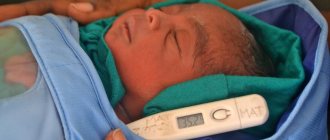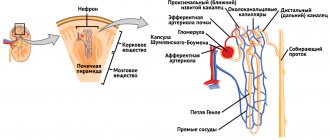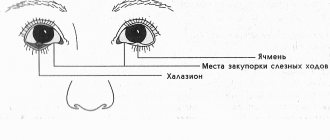Morbidity
The majority of cancer forms are very aggressive; in medical practice, there are cases where the tumor doubles in size in 2 weeks. Often the pathology is diagnosed at advanced stages, when the tumor extends beyond the boundaries of the testicle and metastasis is observed.
Young men may not pay attention to back pain, which is the main sign of cancer, since it can be a consequence of heavy physical labor or sedentary work. A herniated disc or osteochondrosis may be misdiagnosed. There is no adequate therapy, and other symptoms begin to appear.
The tumor grows very quickly, so it is necessary to contact doctors such as an oncologist, urologist, oncologist surgeon, or endocrinologist as soon as possible. However, men often delay visiting a specialist for various reasons, expecting that the disease will go away on its own.
The development of cancer is always unpredictable, but the growth of pathogenic cells is inevitable. If we take the entire number of cancers, testicular tumors account for about 2% of the total number of cases. The disease progresses rapidly and often causes death in young people under 35 years of age.
On this topic
- Oncourology
How long do people live with stage 3-4 prostate cancer?
- Natalya Gennadievna Butsyk
- December 10, 2020
The neoplasm begins its development in the gonads, and then can affect other areas of the body.
According to statistics, the majority of patients are men 15-35 years old. Most often, unilateral lesions are observed; only in 2% of cases is a bilateral form of pathology observed.
Symptoms and clinical picture
Complaints from patients in the early stages of the disease are insignificant and may even be completely absent; this is the reason that patients usually seek help only when cachexia and metastases have developed.
In more advanced cases, patients pay attention to a painless enlargement of the scrotum, causing awkwardness when moving and sitting, and a feeling of heaviness in it. In the future, pain in the scrotum of a shooting nature may occur, spreading upward along the spermatic cord and radiating to the kidney area. The appearance of these pains is a symptom of germination of the spermatic cord by a tumor.
The time interval between the onset of testicular enlargement and the patient seeking help ranges from 6 to 15 years. Slow growth is usually characteristic of teratoid testicular tumors. Seminomas grow quickly. Sometimes a slowly growing testicular tumor, which existed for a long period asymptomatically, suddenly, seemingly without visible external causes, begins to grow rapidly and becomes malignant. Typically, this worsening of the disease is directly related to the increased sexual activity of patients and is observed between the ages of 20 and 30 years.
In some cases (teratoid tumors), the disease proceeds for a long time as a local disease, without giving either metastases or cachexia; in other cases (seminomas, sarcomas), the phenomena of generalization of the process occur quickly. Chorionepitheliomas have a particularly malignant course. Patients usually die due to symptoms of cachexia and the presence of metastases in the retroperitoneal lymph nodes.
Early damage to the retroperitoneal lymph nodes is explained by the wealth of lymphatic pathways in the testicle, which carry lymph from here to the deep lumbar nodes, sometimes directly into the thoracic duct cistern through the intermediate nodes, passing through the thickness of loose retroperitoneal tissue under the mesenteries of the transverse colon and small intestine.
Its regional nodes closest to the testicle are located on the right above the confluence of the common iliac veins and on the anterior wall of the inferior vena cava, on the left slightly higher, outward from the aorta and reaching the level of the renal vessels. Here the lymph nodes are located in the tissue covering the lumbar muscle on the left - between the kidney and the aorta, sometimes on the anterior surface of the latter, on the right on the anterior surface of the inferior vena cava, or in the space between the latter and the aorta.
Superficial lymph nodes (inguinal) are rarely affected and usually only when a malignant testicular tumor, having reached a large size, grows into the membranes and skin of the scrotum. This is explained by the difference in the lymphatic system of the testicles and their membranes and the absence of anastomoses between them. Metastatic tumors of the lymph nodes can cause subjective complaints from patients in the form of significant pain from compression of the spinal roots, disorders of the intestines and stomach. Sometimes these attacks of pain are accompanied by an increase in temperature and are easily classified by doctors as “colds”. Compression of the inferior vena cava by a developed metastatic tumor can cause the development of edema of the lower extremities.
The testicle affected by a malignant tumor appears in the initial stage of the disease to be of normal size and consistency, and in its thickness a dense painless node is felt, not fused to the skin, sharply demarcated from the surrounding tissues. Subsequently, the tumor occupies the entire testicle. The latter appears to be a dense, lumpy, painless mass, in which it is possible to palpate the appendage separately. The spermatic cord is thickened due to the dilation of the veins; in some cases, in its thickness it is possible to palpate individual distinct thickenings that are not connected with the excretory duct (as is observed in tuberculosis), which are nothing more than lymphatic glands affected by the neoplastic process.
Classification
Testicular cancer is classified into:
- Germ cell tumors – develop from seminal germ cell structures, occur in 95%.
- Non-germinogenic formations - formed from the testicular stroma.
- Mixed tumors - elements of both forms are present.
The following types of disease have been identified:
- Seminoma is an aggressive, invasive neoplasm, observed in 38% of cases, metastases quickly appear.
- Teratocarcinoma - manifests itself against the background of abnormalities in the formation of the gonads in the womb. Diagnosed in boys under 3 years of age, it is extremely rare in young people about 20 years old.
- Teratoma - forms in the fetus and is considered a mixed type neoplasm.
- Chorionic carcinoma is diagnosed very rarely, since its formation begins from germinal cell elements.
- Others are lymphomas, secondary neoplasms in cancer of the lungs and prostate.
On this topic
- Oncourology
Restoring potency after prostate cancer surgery
- Natalya Gennadievna Butsyk
- December 6, 2020
Testicular cancer is considered very dangerous and is classified according to stages of development according to the international TNM form:
- T-1 – the cancerous tumor does not extend beyond the boundaries of the testicular membrane.
- T-2 is a small neoplasm, there is deformation of the scrotum and enlargement of the organ.
- T-3 – the tumor penetrates the membrane and tissue of the appendage.
- T-4 – significant increase in tumor, damage to the scrotum, spermatic cord.
- N-1 – the appearance of metastases in the lymph nodes, detected after an x-ray.
- N-2 – enlargement of regional lymph nodes, can be detected by palpation.
- M-2 – formation of secondary cancerous tumors in the liver, kidneys, lungs, and brain of the head.
First signs and symptoms
The clinical picture depends on the type and stage of the tumor process: with testicular cancer, local signs and negative manifestations appear against the background of the growth of metastases. Men must understand: their health depends on timely diagnosis and initiation of treatment. In advanced cases, the risk of a detailed outcome increases. Testicular cancer is aggressive, often forming distant lesions.
You should urgently visit a urologist when the first symptoms of testicular cancer appear:
- swelling of the testicle or a separate area;
- changes in the shape and size of the testicles;
- the appearance of unusual symptoms: numbness, a feeling of heaviness, some areas are hotter to the touch.
In the early and moderate stages of cancer pathology, one or two of the following symptoms appear:
- swelling of the testicles, no pain;
- active growth of hair on the face and body in boys before the onset of puberty;
- heaviness and discomfort in the scrotum area;
- the mammary glands become enlarged, discomfort appears when pressing on the swollen areas;
- soreness in the groin area.
The development of the metastasis process leads to the appearance of specific signs of testicular cancer:
- purulent discharge mixed with blood from the penis;
- disruption of urine outflow;
- pain in the back and abdominal area;
- breathing problems;
- general weakness;
- shortness of breath is often bothersome;
- kidney diseases: hydronephrosis, pyelonephritis;
- sudden weight loss;
- pale complexion;
- prostration.
READ ALSO: What is a serous ovarian cyst and how to get rid of a benign tumor formed from epithelial tissue
Causes
It is difficult to quickly say the reason that provoked the tumor, but the following criteria are highlighted:
- Survived tumor of the other testicle.
- Cryptorchidism is the undescended testicle into the scrotum.
- injuries .
- Thyroid diseases .
- Genetic predisposition.
- Underdevelopment of the gonads in intrauterine development.
- High level of radiation, exposure.
The following groups of people are at risk:
- Thin, tall men .
- HIV-infected.
- Belonging to the white race - pathology is diagnosed 10 times more often than in Asians and African Americans.
- Moles that can become cancerous.
- Early sexual formation.
- Unfavorable working conditions.
On this topic
- Oncourology
Life expectancy for prostate cancer stages 1-4
- Olga Vladimirovna Khazova
- November 29, 2020
Infertile people can be diagnosed for the following reasons:
- Hypodynamia is a dysfunction of the entire body with limited physical activity and decreased contractile strength of muscles.
- Constant overheating of the scrotum.
- Inversion of the spermatic cord, leading to infringement of the constituent elements and disruption of the blood supply to the testicle.
- Abuse of tobacco products – smoking experience exceeds 10 years.
- Hypospadias is an abnormal development of the gonads in a man, which is characterized by the location of the urethral opening below the head of the penis or on the scrotum.
In some cases, ovarian cancer can be caused by Down or Klinefelter syndrome.
Symptoms
First of all, a cancerous formation can be suspected by an enlarged scrotum and by palpating lumps that were not previously noticed.
Seals may be characterized by a painful symptom, but in some patients it is absent. When testicular cancer develops, patients often notice pain in the abdomen and scrotum. Pathology can manifest itself in a lack of sexual desire.
In the first stages of development, the following symptoms appear:
- Fatigue, general malaise.
- Paleness of the skin.
- A sharp decrease weight .
- Unreasonable increase in temperature (37-38 C°).
- Swelling in the scrotum area.
- Dyspnea.
- pain .
- Enlarged regional lymph nodes.
- Intoxication of the body.
- Decreased appetite.
On this topic
- Oncourology
What does prostate cancer look like on an MRI?
- Olga Vladimirovna Khazova
- November 29, 2020
At advanced stages of development, metastasis begins. The following symptoms will indicate the advanced stage of the disease:
- Severe cough (dry, with sputum).
- Pain syndrome in the hypochondrium.
- Mechanical jaundice.
- Increase in testicle size.
- Swelling in the scrotum area.
- Severe pain in the lower abdomen.
- Diffuse enlargement of lymph nodes.
- Shortness of breath even with minor physical exertion.
- Pain in the chest and lower back.
- Deformation of the shape of the testicle (observed under the pressure of the tumor).
- Induration (determined by palpation, often painless).
With the development and growth of the tumor, the number of pathogenic cells increases, and the risk of damage to the appendage increases proportionally. As a result, diseases of the endocrine system and secondary sexual characteristics often appear, and this can change a person’s appearance.
Diagnostics
If the development of testicular cancer is suspected, the doctor prescribes step-by-step diagnostic methods. Initially, the doctor collects the patient’s medical history, identifying current diseases and pathological heredity.
A thorough examination of the patient is carried out, the scrotum area, lower abdomen and groin are palpated (to detect the primary focus), the lymph nodes of the inguinal and supraclavicular region are palpated, and the mammary glands are palpated for the presence of gynecomastia - enlarged mammary glands in men.
The following measures are prescribed:
- Diaphanoscopy - transillumination of the scrotal organs to exclude other diseases (cyst, hydrocele - testicular hydrocele, spermatocele - cyst filled not with fluid, but with sperm).
- Ultrasound examination of the scrotum - determining the location of the tumor, size and stage.
- Magnetic resonance imaging - the type of cancer is determined.
- Tumor markers - the stage of the pathology is revealed and the further prognosis for the patient is determined. An analysis is carried out for a-fetoprotein, lactate dehydrogenase, alkaline phosphatase and others. An increase in marker levels is observed in more than 50% of patients.
- Ultrasound examination of the abdominal region, kidneys - the presence of metastasis is diagnosed.
- biopsy - morphological analysis of the material is assessed.
- Chest X-ray
- Magnetic resonance and computed tomography of the head brain.
- Osteoscintigraphy – in-depth bone scanning
The final diagnosis is made during an open biopsy of the testicle; during the procedure, the biopsy material is also analyzed and the iron is removed along with the spermatic cord.
The patient can independently detect the formation of a cancerous tumor in the early stages with careful palpation. The testicle may be hard or soft, lumpy, irregularly shaped, or enlarged. Painful sensations often occur.
At the slightest suspicion of such a pathology, you should immediately consult a doctor, this will make it possible to promptly diagnose the disease and prescribe adequate therapy.
Diagnosis of testicular cancer
The first step in diagnosing testicular cancer is palpation of both testicles of the patient. After this, the inguinal lymph nodes are palpated, as well as a breast examination to rule out gynecomastia.
The next step in diagnosing testicular cancer is the use of diaphanoscopy (examination of the scrotum with a cytoscope). This diagnostic method allows you to distinguish a cyst filled with fluid from a dense body of a benign tumor or testicular cancer. Laboratory methods for detecting symptoms of testicular cancer include clinical, immunochemical and biochemical blood and urine tests.
The final diagnosis of testicular cancer is made based on the results of a biopsy of testicular tissue. Examination of a biopsy specimen under a microscope allows one to determine the type of tumor and predict the expected rate of development of testicular cancer.
The abdomen of a patient with signs of testicular cancer is examined using ultrasound. Chest X-ray, MRI and CT scans are performed to determine the extent of metastasis of testicular cancer.
Treatment
Treatment for testicular cancer is no different from other similar pathologies. The following methods are used for this:
- Radiation treatment.
- Chemotherapy.
- Surgery.
The operation involves removing the affected testicle. If an advanced stage is diagnosed, then it is often necessary to remove the lymph nodes, since the risk of metastases is high.
After surgery, chemotherapy or radiation treatment is prescribed. Such measures inhibit the further development of cancer cells. This combined approach to therapy is used by all oncologists, since only such a solution will be the most effective and will not lead to various complications.
The expected result of treatment can be predicted by the doctor based on the general condition of the patient and the stage of development of the pathology.
Directions and options for therapy
When testicular cancer is detected, in most cases the affected element and spermatic cords are removed. If cancer is detected in boys or young men with a single gland or bilateral tumor, then the urologist-oncologist considers the possibility of surgical treatment with preservation of the organ.
In most cases, orchiectomy is prescribed; to reduce the risk of relapse, retroperitoneal lymphadenectomy is performed if there are indications for removal of lymph nodes. With the development of stage 1 and 2 seminoma tumors, radiation therapy is needed. Detection of non-seminoma cancer and more severe stages with infiltration of the tunica albuginea, tumor invasion into adjacent areas is a reason for the use of systemic chemotherapy.
READ ALSO: What are multifollicular ovaries: normal or pathological, the difference between the syndrome and polycystic disease
After removal of two testicles or with a significant decrease in testosterone concentrations, men receive HRT. Optimal selection of hormone dosage during replacement therapy reduces the risk of side effects.
Irradiation and chemotherapy often negatively affect the quality and volume of sperm, the level of fertility decreases, and the production of FSH, testosterone, and LH is disrupted. If a man wants to have children in the future, then before starting therapy, you can visit a fertility center to have sperm cryopreserved.
Find out what vitamins are needed for thyroid hypothyroidism in women and men.
The classification of endocrine glands and their hormones can be seen in this article.
Go to https://vse-o-gormonah.com/vnutrennaja-sekretsija/shhitovidnaya/narodnye-sredstva.html and read about the symptoms and treatment of thyroiditis of the thyroid gland using traditional medicine.
Where does it metastasize?
The formation and development of the tumor is observed directly in the testicle, but as it progresses it can spread throughout the body. Most often, metastasis is observed in the brain, bone skeleton, liver, and lungs. Distribution can occur in two ways:
- Hematogenous - with blood flow.
- Lymphogenic - through lymph.
The disease belongs to a number of young people, since it most often affects young people 15-35 years old.
Possible complications
The pathology quickly develops and progresses; if the diagnosis is made at stages 1 and 2, then about 90% of patients can return to their usual lifestyle.
However, not everyone rushes to see a doctor when symptoms appear, which aggravates the problem. This happens only when the signs begin to appear clearly and the pathology has grown, complications often developing. In such cases, it is almost impossible to achieve a good treatment result.
Treatment begins with the removal of the testicle, which causes a lot of stress for many men, but it must be understood that the second testicle continues to function and perform its proper functions. If a cosmetic defect is so important to a person, then a special prosthesis can be implanted in place of the removed testicle.
On this topic
- Oncourology
Prostate cancer on ultrasound
- Natalya Gennadievna Butsyk
- November 29, 2020
The following complications may occur after radiation and chemotherapy:
- Infertility occurs when the dose of radiation is exceeded and both testicles are removed .
- sperm production is a reversible phenomenon, more often observed when using the chemotherapy drug Cisplatin. The function is restored after 5-6 years.
- Deterioration of function .
- Formation of a tumor in the other testicle.
- Damage brain structures
- loss .
- Vomiting syndrome.
Without treatment, irreversible consequences will occur. Oncological formation begins to quickly metastasize and affect other organs, disrupting their functions. Then death is inevitable - the most dangerous complication.
Testicular cancer treatment
Most often, the tumor is detected at stage I (limited to the testicle). In order to cure the patient, it is necessary to surgically remove the diseased testicle with the epididymis and vas deferens - orchidectomy (see clinical example). Complete removal of the testicle is the standard approach. Consideration of the issue of partial removal of a section of testicular tissue with a tumor is carried out in exceptional cases - in the presence of a single testicle, when there are serious doubts about the malignant nature of the formation, and the size and location of the tumor technically allow it to be “cut out” from the testicle.
But treatment for testicular cancer does not end with surgery. After surgery, it is necessary to take measures to prevent tumor recurrence. Even if tumor metastases are not detected during preoperative examination, we cannot completely exclude the possibility that some tumor cells have gone beyond the testicle and settled in the lymph nodes, giving rise to microscopic colonies of new tumor cells (micrometastases), which in the future will become a source of relapse. Depending on the level of tumor markers (initial and after surgery), the results of histological examination of the removed testicle, as well as a number of other parameters, you will be informed about the likelihood of a relapse.
If the probability is low, regular examination is recommended during the first two years after surgery to exclude relapse - measuring the level of tumor markers in the blood, CT scan of the abdominal cavity and lungs. The frequency of tests is determined by the doctor.
If there is a moderate or high probability of relapse, and if for subjective reasons you cannot undergo regular examinations, a course of chemotherapy, radiation therapy, or surgery to remove the retroperitoneal lymph nodes is recommended in order to destroy possible microscopic tumor foci. These treatment methods significantly reduce the risk of relapse, but have a negative impact on reproductive function.
Even if you develop a recurrence of the tumor, it also responds very well to radiation therapy and chemotherapy, so your prognosis remains generally good.
If obvious metastasis is detected (stages II and III), the possibility of chemotherapy and/or radiation therapy is considered before surgery to reduce the mass of tumor cells.
Forecast
The following factors can be determined that will help determine the subsequent prognosis for the patient:
- When the disease is diagnosed in the first and second stages and immediate initiation of therapeutic measures, the prognosis is favorable, the survival rate among patients is 90-95%.
- When diagnosing pathology at later stages , it is impossible to talk about a good prognosis, since at these stages the active release of metastases begins. Only 60% of patients will survive five or more years.
Testicular cancer is detected in young people from 15 to 35 years old, but some of them may have problems with having offspring. In such cases, it is possible to carry out the so-called cryopreservation of seed material - freezing the seed. Recently, many patients have resorted to this procedure.










